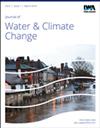Flood assessment using machine learning and its implications for coastal spatial planning in Phu Yen Province, Vietnam
IF 2.7
4区 环境科学与生态学
Q2 WATER RESOURCES
引用次数: 0
Abstract
The objective of this study was the development of a new machine learning model using a radial basis function neural network (RBFNN) to build flood susceptibility maps and damage assessment for the Phu Yen province of Vietnam. The built model will be optimized by five algorithms, namely Giant Trevally Optimization (GTO), Golden Jackal Optimization (GJO), Brown-Bear Optimization (BBO), Gray Wolf Optimizer (GWO), and Whale Optimization Algorithm (WOA) to find out the best model to establish the flood susceptibility map. These models were evaluated using the statistical indices such as root mean square error (RMSE), mean absolute error (MAE), receiver operating characteristic (ROC), area under the curve (AUC), and coefficient of determination (COD). The result showed that all five optimization algorithms were successfully improving the performance of the RBFNN model, among them the hybrid model RBFNN–BBO has the highest performance with AUC = 0.998 and R2 = 0.8 and the RBFNN–GTO model has the lowest performance with AUC = 0.755 and R2 = 0.65. The regions identified with a high- and very-high flood susceptibility area (1,075 km2) were concentrated on the plain and along three of the largest rivers in Phu Yen province.利用机器学习进行洪水评估及其对越南富安省沿海空间规划的影响
本研究的目的是利用径向基函数神经网络(RBFNN)开发一种新的机器学习模型,为越南富安省绘制洪水易感性地图并进行损失评估。建立的模型将通过五种算法进行优化,即巨魽优化算法(GTO)、金豺优化算法(GJO)、棕熊优化算法(BBO)、灰狼优化算法(GWO)和鲸鱼优化算法(WOA),以找出建立洪水易感性地图的最佳模型。使用均方根误差 (RMSE)、平均绝对误差 (MAE)、接收者操作特征 (ROC)、曲线下面积 (AUC) 和判定系数 (COD) 等统计指标对这些模型进行了评估。结果表明,五种优化算法都成功地提高了 RBFNN 模型的性能,其中混合模型 RBFNN-BBO 的性能最高,AUC = 0.998,R2 = 0.8;RBFNN-GTO 模型的性能最低,AUC = 0.755,R2 = 0.65。确定的洪水高易发区和极高易发区(1,075 平方公里)集中在富安省的平原和三条最大的河流沿岸。
本文章由计算机程序翻译,如有差异,请以英文原文为准。
求助全文
约1分钟内获得全文
求助全文
来源期刊

Journal of Water and Climate Change
WATER RESOURCES-
CiteScore
4.80
自引率
10.70%
发文量
168
审稿时长
>12 weeks
期刊介绍:
Journal of Water and Climate Change publishes refereed research and practitioner papers on all aspects of water science, technology, management and innovation in response to climate change, with emphasis on reduction of energy usage.
 求助内容:
求助内容: 应助结果提醒方式:
应助结果提醒方式:


